Korban c.1952
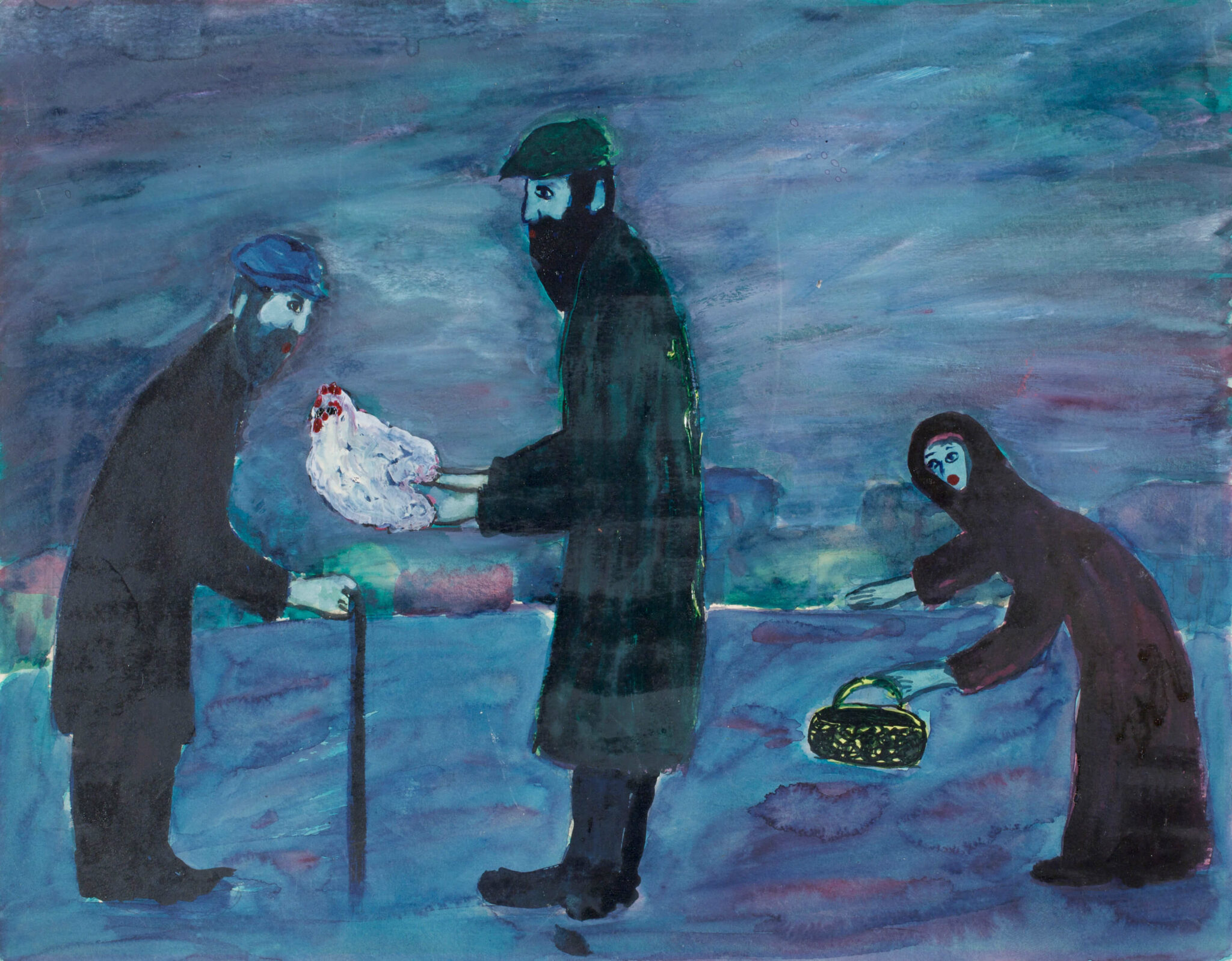
Gershon Iskowitz, Korban, c.1952
Gouache on board, 43.5 x 53 cm
McMaster Museum of Art, Hamilton
Korban refers to the Korban Pesach, the Hebrew sacrifice of a lamb at Passover, practised since the Israelites’ exodus from Egypt in biblical times. Although this ritual was “officially” ended in the first century of the Christian Era, it continued throughout the European diaspora as an important symbolic act, often expressed in the sacrifice of a chicken, as depicted in this painting.
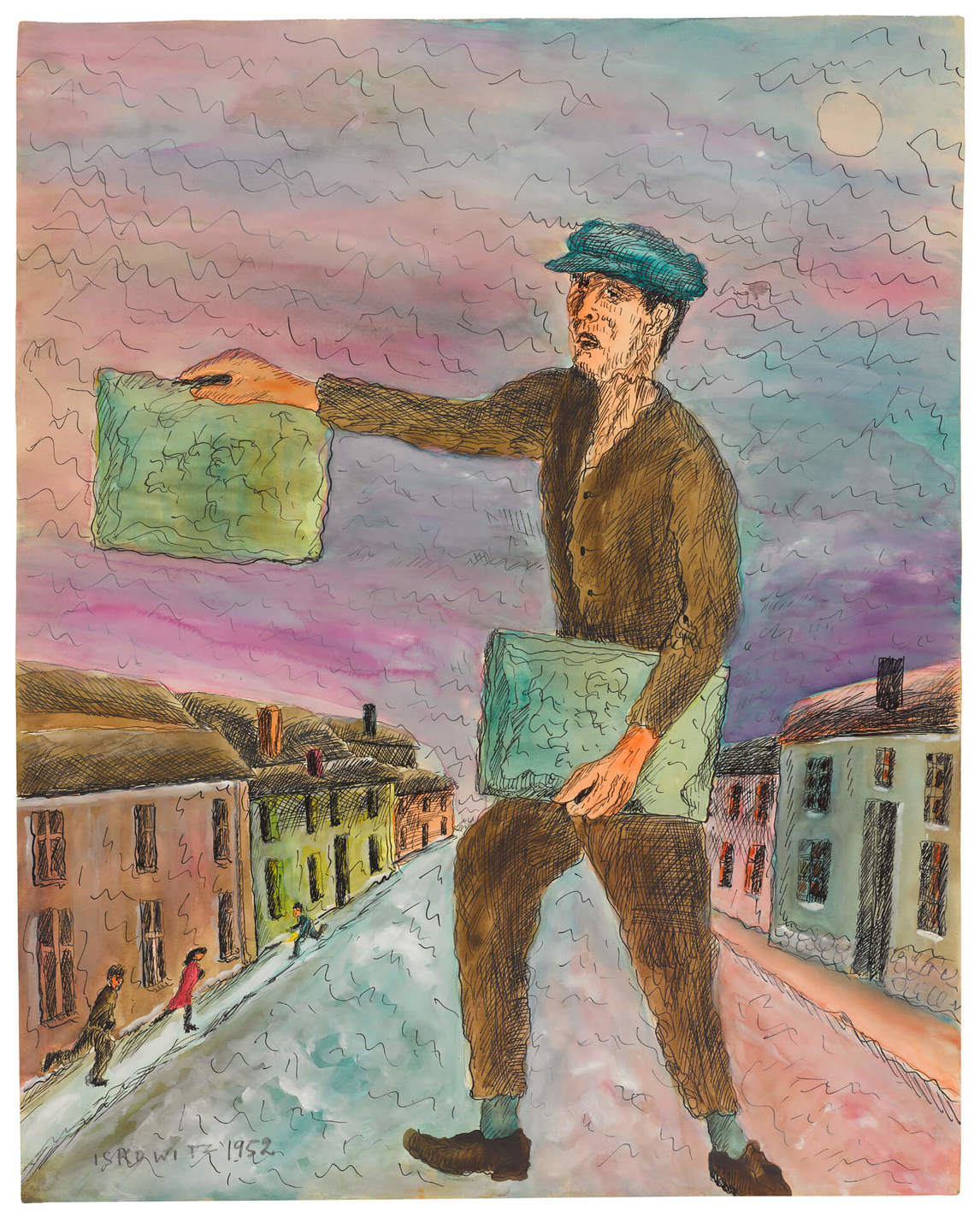
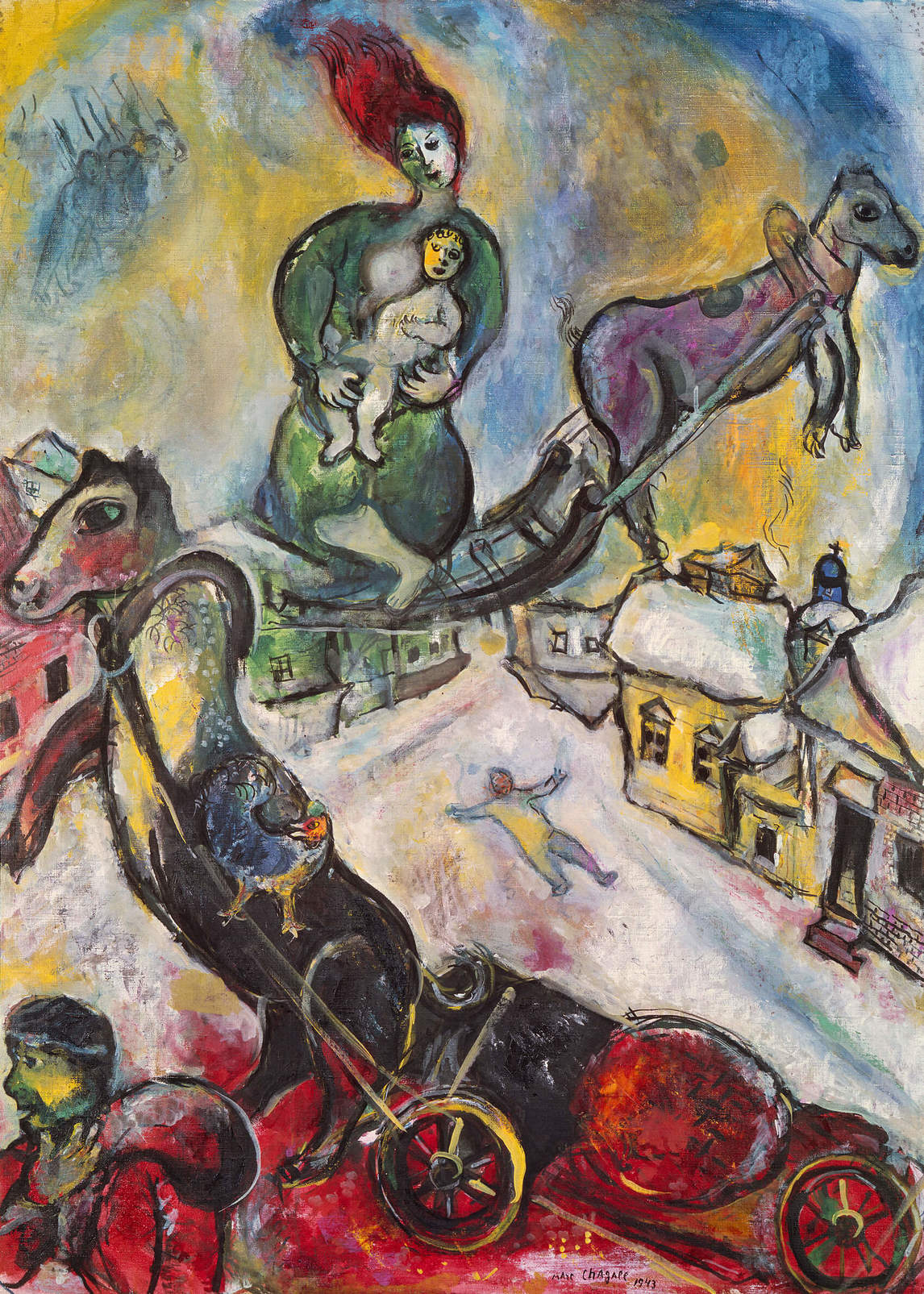
After his liberation from the Buchenwald concentration camp in April 1945, Gershon Iskowitz embarked on memory works. He continued to make these drawings, watercolours, and gouache or bodycolour paintings until approximately 1954, six years after he immigrated to Canada. These works depict aspects of his life in Poland before the war, the pogroms and the Kielce Ghetto, the concentration camps, and, perhaps, life during his two and a half years in the Feldafing Displaced Persons Camp outside Munich.
While the subject matter of Korban is distinct from the traumatic events in other Iskowitz memory paintings, as David Burnett writes, it offers an important and revealing aspect of Iskowitz’s need to recover the past through “the theme of the family, of its loss and yet its essential reality in memory” rather than sentiment or nostalgia: “The act of painting itself [is] approached with a literal and . . . naïve directness . . . recapturing the reality of his past [and] in a sense atoning by keeping the memories vividly before him.”
Iskowitz was not following the model of any other artists for these works, but they can be linked to work by other twentieth-century artists who reflected on the ruptured past of everyday life through memory paintings, most notably Marc Chagall (1887–1985), David Burliuk (1882–1967), and William Kurelek (1927–1977).

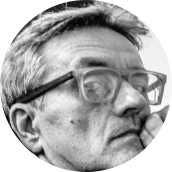 About the Author
About the Author
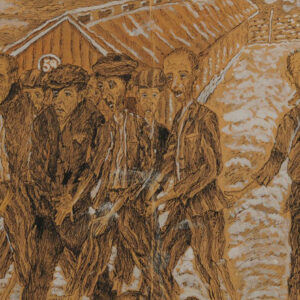 More Online Art Books
More Online Art Books
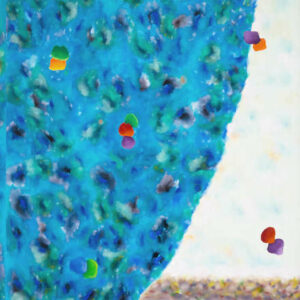 Acknowledgements
Acknowledgements